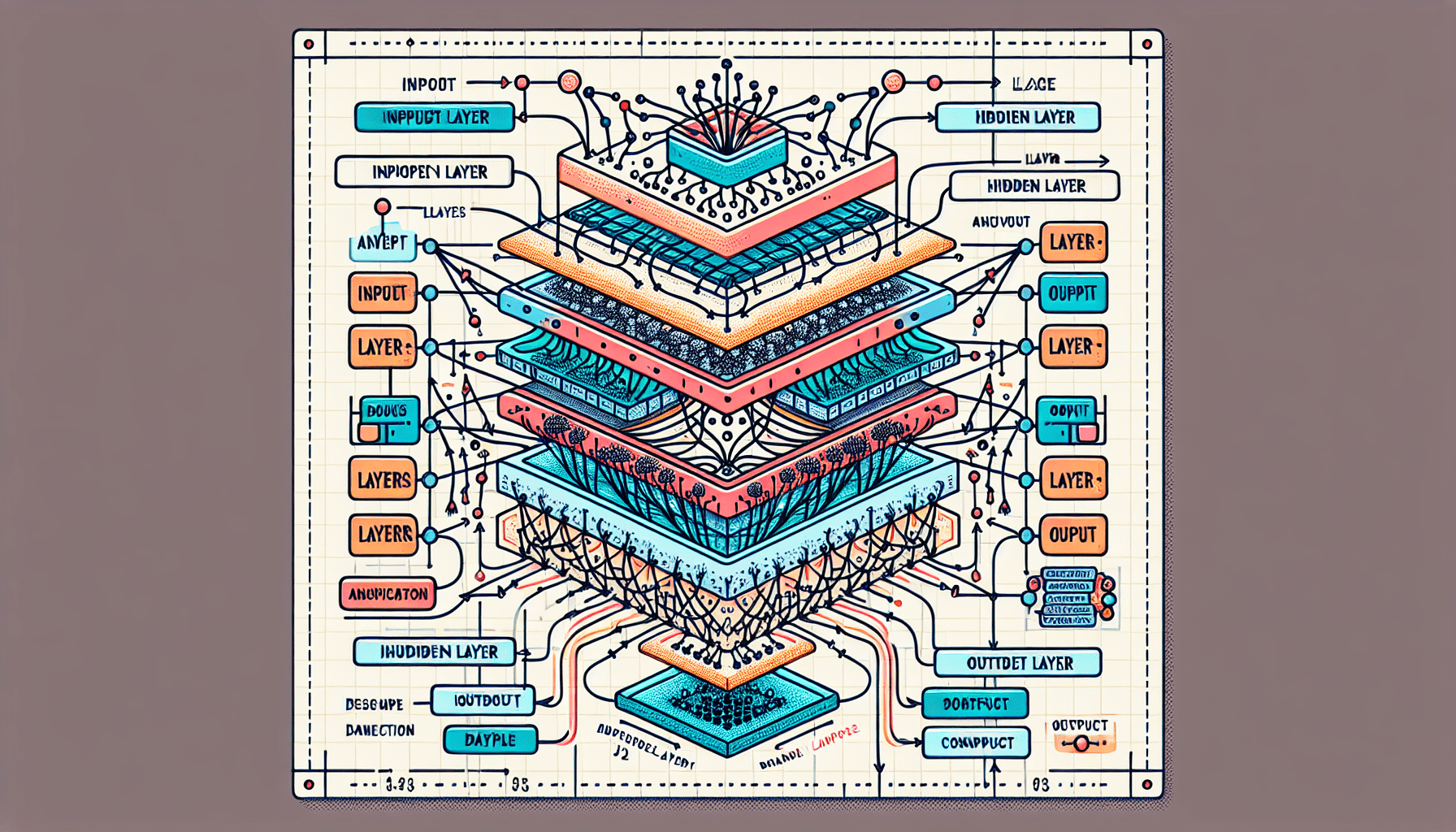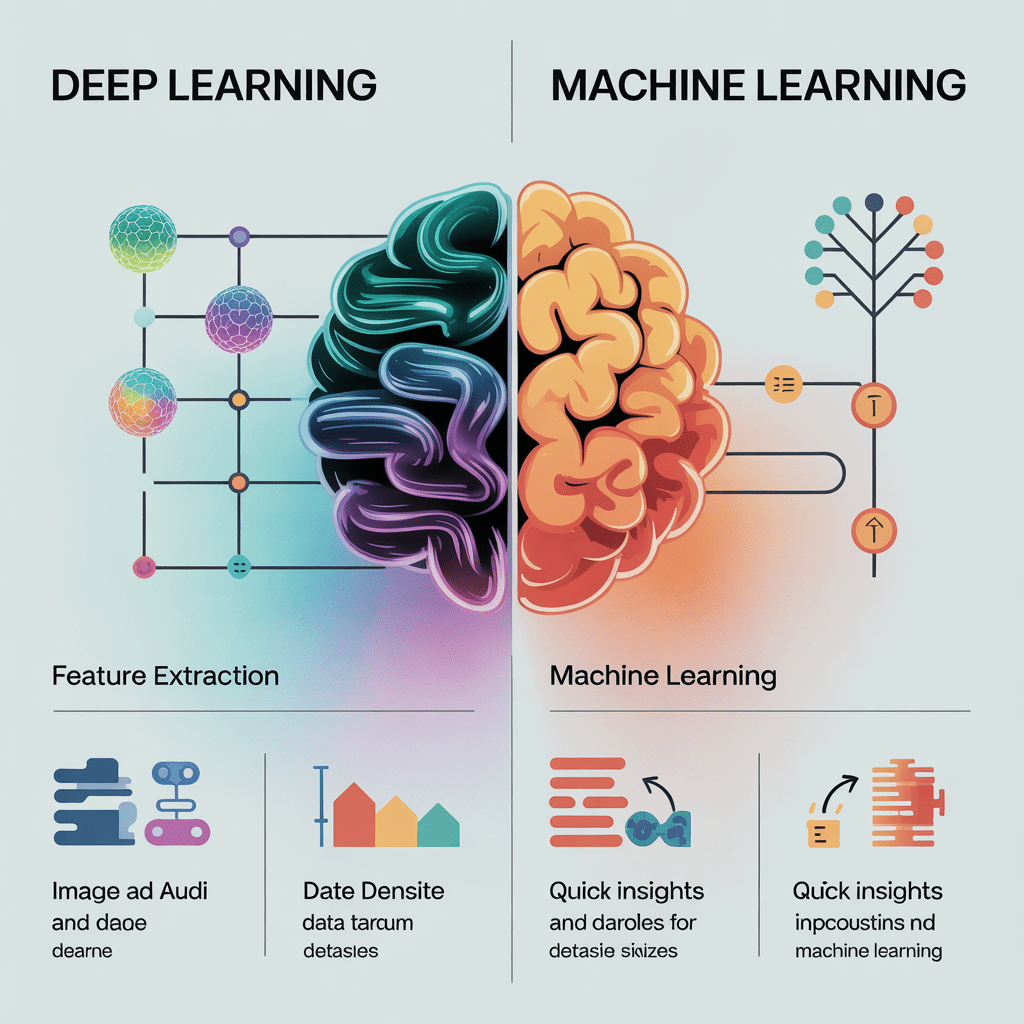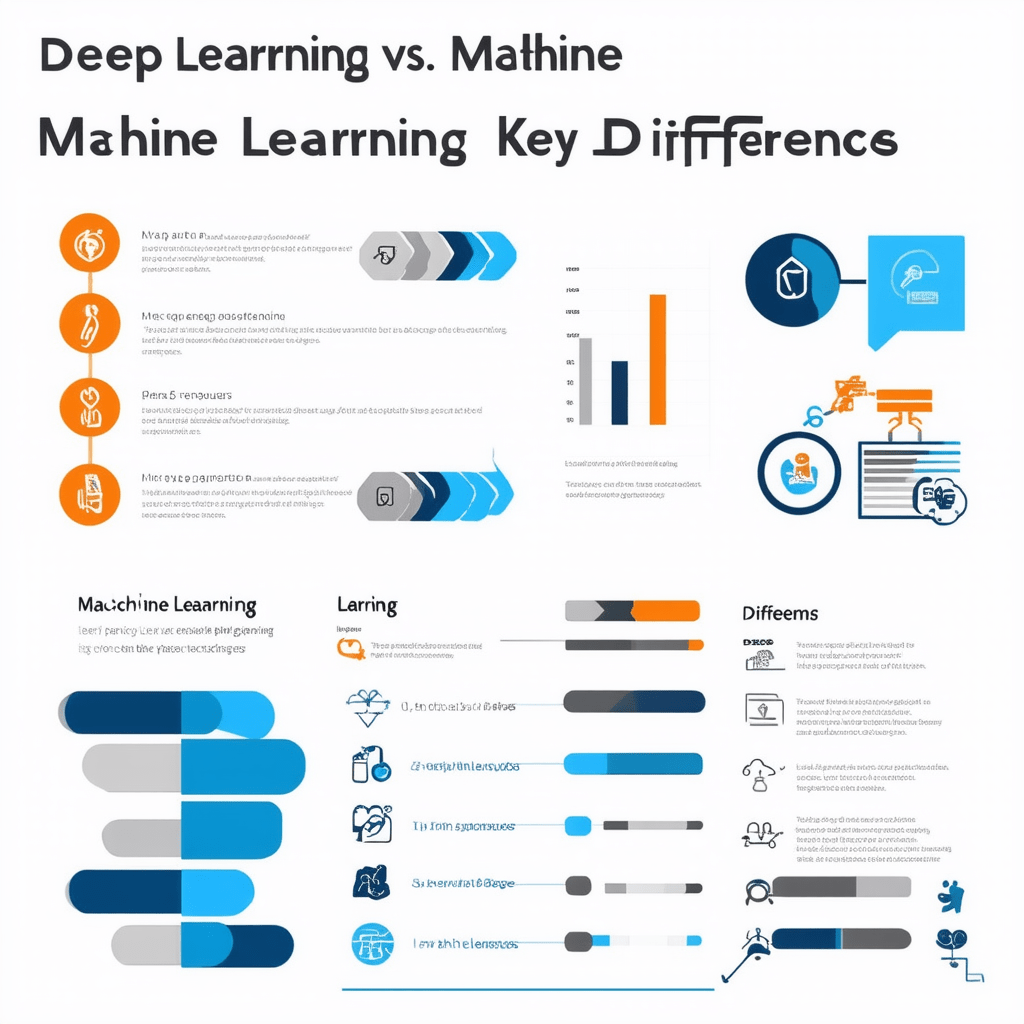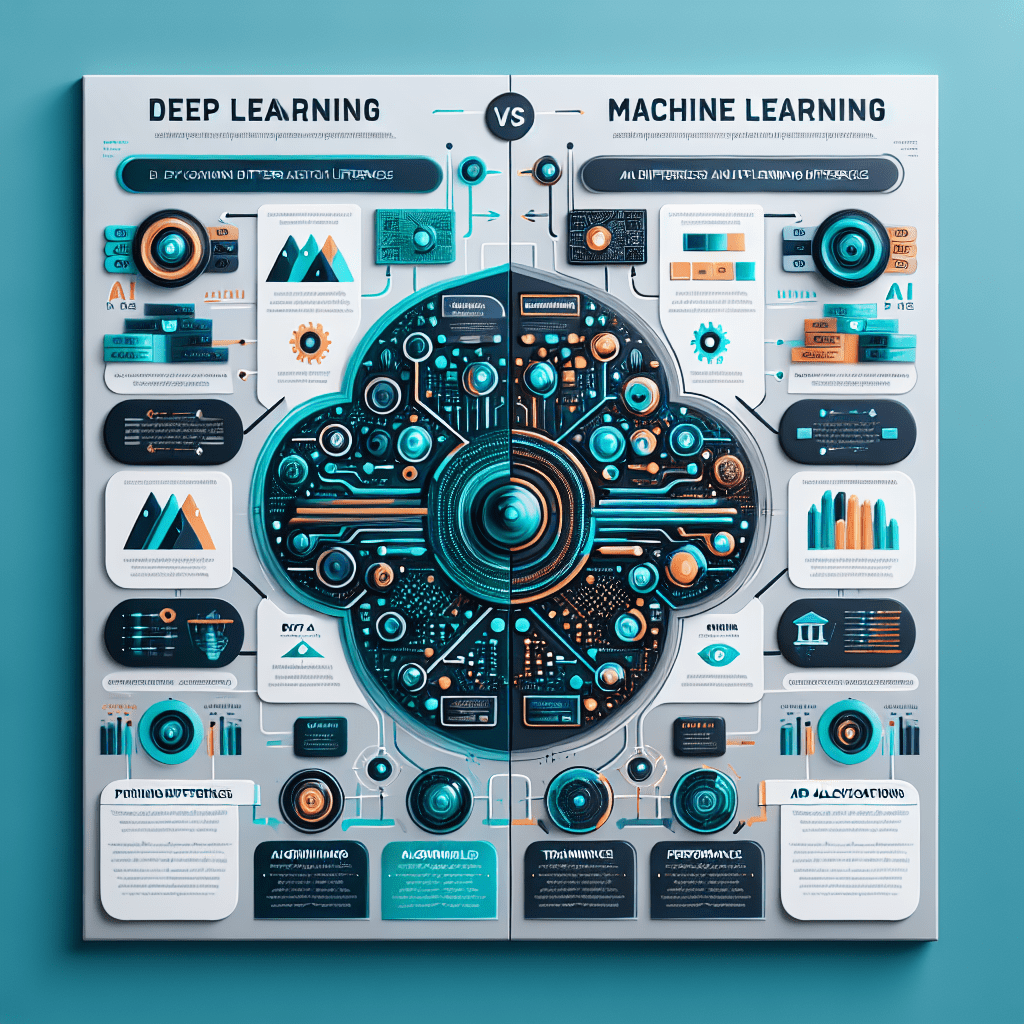Introduction: A Deep Dive into Deep Learning vs. Machine Learning
Table of Contents
Machine learning and deep learning are often mistaken as interchangeable buzzwords, but they’re hardly the same. Think of it like teaching a child to recognize animals. Machine learning would involve explaining the traits of each animal one by one, like ‘Dogs have four legs and bark’ or ‘Cats have whiskers and purr.’ It’s a straightforward process, relying on explicit instructions. Now, deep learning? That’s more like showing the child thousands of pictures without any explanations, letting them figure out patterns on their own over time. It’s akin to how we learn to recognize faces or voices without thinking about it. Deep learning’s ability to work with unstructured data like images and sound sets it apart. (Read our full guide on Machine Learning and Data Science Techniques.)
In my experience, the complexity of deep learning’s neural networks can be intimidating. Picture a neural network as a multi-layered cake, where each layer is responsible for identifying different features of the data. At the bottom, you might have layers focusing on simple edges and shapes in an image, while higher layers recognize more complex features like eyes or wheels. These layers of neurons sift through vast amounts of data, identifying intricate patterns that traditional machine learning models might miss. This distinction is why your voice assistant gets smarter every time you use it, learning to distinguish subtle variations in your speech. It’s also why self-driving cars can navigate unpredictable scenarios, like a child running into the street or sudden changes in traffic patterns.
From a practical standpoint, the key takeaway here is understanding these differences arms you with the know-how to apply the right technology for specific challenges. Whether you’re optimizing a recommendation system for an e-commerce platform or crafting an autonomous vehicle, the choice between machine and deep learning isn’t just academic—it’s practical and often pivotal. For instance, machine learning might be your go-to for tasks with clear rules and outcomes, like predicting stock prices based on historical data. On the other hand, deep learning shines when you need to make sense of complex, unstructured data, making it ideal for tasks like image recognition or natural language processing. So, next time you face a challenge, think about the nature of your data and the complexity of the patterns you’re trying to uncover. This understanding is your first step toward choosing the right technology and ultimately, achieving success in your project.
Key Benefits and Advantages
Machine learning, a subset of AI, is like the diligent assistant you didn’t know you needed, tirelessly sifting through mountains of data to spot patterns and make informed decisions. Imagine waking up to a playlist on Spotify that feels like it was curated by your best friend; that’s machine learning at work, analyzing your listening habits and preferences to predict your next favorite tune. But its reach extends far beyond music streaming.
In the retail world, machine learning algorithms drive recommendation engines that suggest products you didn’t even know you wanted, based on your previous purchases. Ever been amazed when Amazon suggests the perfect accessory for that gadget you just bought? That’s no coincidence—it’s machine learning analyzing your buying patterns.
Healthcare is another field where this technology shines brightly. Predictive models leveraging machine learning can analyze patient histories, symptoms, and even genetic information to assist in diagnosing diseases. This can lead to earlier interventions and personalized treatment plans, potentially saving lives.
The financial sector also taps into machine learning to gain an edge. Algorithms scrutinize vast amounts of market data, identifying trends and predicting stock movements with remarkable accuracy. This provides traders and investors with insights that are both timely and invaluable.
In logistics, machine learning optimizes supply chains by predicting demand, managing inventory, and even planning delivery routes. This ensures goods are produced and delivered efficiently, cutting costs and boosting customer satisfaction. In essence, machine learning is transforming industries by turning data into actionable insights, making it a cornerstone of modern technology.
- Handling vast datasets efficiently is not just a technical achievement; it’s a necessity in today’s data-driven world. Imagine the sheer volume of data generated every second by social media platforms, IoT devices, and e-commerce transactions. Deep learning systems thrive in this environment, seamlessly processing terabytes of information that would otherwise overwhelm traditional systems. This capability allows companies to extract meaningful insights from oceans of data.
- Pattern recognition is a hallmark of deep learning. For instance, consider how these systems identify faces in a sea of images on social media or detect fraudulent transactions among millions of daily financial operations. They do this by analyzing intricate patterns and correlations that are often invisible to the human eye. In my experience, the accuracy of these systems only gets better over time, as they’re exposed to more diverse datasets.
- Adapting swiftly to new data is crucial in fields like cybersecurity and health diagnostics, where the landscape changes rapidly. Deep learning models can update themselves almost in real-time, incorporating new patterns of cyber threats or genetic markers of diseases. This adaptability ensures that the solutions provided are not just current but also predictive, helping organizations stay ahead of the curve.
- Automating repetitive tasks is another strength of machine learning systems, including deep learning. Think about the hours saved by automating customer service responses or sorting through countless resumes for recruitment. By handling these mundane tasks, humans can focus on strategic activities that require creativity and complex decision-making, which machines are not yet equipped to handle.
- The beauty of deep learning lies in its ability to continuously improve with more data. Picture a self-driving car that becomes better at navigating roads as it encounters more driving scenarios, or a language model that refines its translations the more it is used. This continuous learning loop not only enhances performance but also builds a foundation for future innovations, making these systems more intelligent over time.
How It Works: A Practical Explanation
Deep learning isn’t just a buzzword; it’s a transformative approach in the field of AI, rooted in the concept of neural networks that mimic the human brain’s architecture. Imagine a skyscraper where each floor has a specific role, processing and refining details from the floor beneath. These multi-layered networks are what give deep learning its power to understand and interpret vast amounts of data.
One of the standout features of deep learning is its ability to process unstructured data, which is data that doesn’t fit neatly into tables. Think of images, audio files, and text documents. This is where deep learning shines, as it can automatically learn and extract features from such data without much human intervention. For example, convolutional neural networks (CNNs) are designed specifically for image tasks. They can identify patterns like edges or textures, which is why they’re used in applications like facial recognition. Every time your phone unlocks when it sees your face, a CNN is likely at work.
On the other hand, recurrent neural networks (RNNs) handle sequential data where context and order matter, such as in language processing. When you use services like Google Translate, RNNs come into play, analyzing the sequence of words in one language and translating them into another. The magic of deep learning is also evident in voice assistants like Siri or Alexa, which understand and respond to spoken commands, thanks to the capabilities of RNNs.
In practical terms, deep learning has revolutionized industries by enhancing the accuracy and efficiency of tasks that once required human intelligence. In healthcare, for instance, deep learning models can analyze medical images to detect diseases with a precision that rivals human experts. Meanwhile, in the automotive sector, deep learning is a cornerstone of self-driving technology, helping cars recognize pedestrians, traffic signs, and other vehicles. The key takeaway here is that deep learning’s ability to build upon previous knowledge autonomously makes it a critical tool in the modern tech landscape, pushing the boundaries of what’s possible with AI.

Case Study: A Real-World Example
Machine learning and deep learning are revolutionizing various sectors by providing tools that were once the stuff of science fiction. In finance, for example, machine learning algorithms are the sentinels against fraud, scrutinizing millions of transactions to spot anomalies that might slip past human eyes. A real-world application is credit card companies deploying real-time machine learning models that flag suspicious activity, like a sudden flurry of purchases in a foreign country. Meanwhile, deep learning goes a step further by sifting through complex datasets. Investment firms are increasingly using deep learning to predict stock movements by analyzing historical data, news articles, and even social media sentiment.
In the automotive sector, the leap from machine learning to deep learning is akin to moving from a horse-drawn carriage to a modern car. Self-driving vehicles rely heavily on deep learning to process an avalanche of sensor data, including LIDAR, radar, and cameras. These systems must make split-second decisions to navigate traffic, recognize pedestrians, and interpret road signs. Companies like Tesla and Waymo are at the forefront, using deep neural networks to ensure safety and reliability on the road.
Retailers, on the other hand, are harnessing these technologies to refine the shopping experience. Machine learning helps in understanding customer preferences by analyzing purchase history, while deep learning can predict future buying behaviors. This predictive capability allows retailers to tailor marketing campaigns and product recommendations, boosting customer engagement and sales. For example, Amazon’s recommendation engine uses these technologies to offer personalized suggestions, making it a cornerstone of their business strategy. These examples underscore how machine learning and deep learning are not just buzzwords but pivotal tools driving innovation and efficiency across industries.
This infographic provides a visual comparison between deep learning and machine learning, highlighting key differences. It includes graphics to illustrate the complexity of neural networks in deep learning, contrasted with simpler models like decision trees used in machine learning. The infographic uses contrasting colors to delineate the two fields and includes symbols representing data size, feature extraction automation, computation layers, and applications in high-dimensional data scenarios, emphasizing how deep learning excels in tasks like image and audio processing while machine learning offers quicker insights with simpler computations.

Conclusion: Key Takeaways

Choosing between machine learning and deep learning isn’t about picking sides; it’s about understanding which tool fits the task at hand. Machine learning is often the go-to for situations that aren’t too data-heavy or complex. Imagine training a model to predict housing prices in a small town using a handful of features like square footage and number of bedrooms. Here, traditional machine learning algorithms, such as linear regression or decision trees, can efficiently handle the job with limited computational resources.
On the other hand, deep learning shines in scenarios where the data is vast and the patterns are subtle and intricate. Take, for example, the task of identifying objects in images or understanding natural language. These problems involve massive datasets and complex patterns that simple algorithms can’t easily decipher. Deep learning models, like convolutional neural networks (CNNs) for image recognition or recurrent neural networks (RNNs) for language processing, are designed to tackle such challenges by automatically extracting intricate features from raw data.
The decision also hinges on factors like the kind of data you’re dealing with. Structured and labeled data might lean toward machine learning, while unstructured data, such as audio or video, often requires the depth of deep learning. Moreover, the level of accuracy needed plays a crucial role. If your project demands pinpoint precision, deep learning’s ability to learn from vast amounts of data might be necessary, despite its higher computational cost. So, it’s essential to weigh the problem’s nature, the data’s characteristics, and the desired outcome when choosing your approach.
References and Further Reading
- ScienceDirect Article: Delve into the nuances of neural computation and explore the latest findings in the field with this comprehensive study available on ScienceDirect. Access the article here.
- IBM Cloud Blog: Gain insights into the fundamental differences between deep learning and machine learning from IBM’s perspective. This resource is perfect for those looking to understand these technologies’ practical applications in cloud computing. Read more on IBM’s blog.
- Google AI Blog: Discover the transformative power of neural networks with Google’s introduction to the Transformer model. This blog post is a must-read for anyone interested in the cutting-edge developments in AI. Learn about the Transformer model.
- Harvard Business Review: Explore the business implications of artificial intelligence with insights from Harvard Business Review. This article provides a strategic overview of how AI is reshaping industries. Dive into the business of AI.


Everything is very open with a precise clarification of
the challenges. It was definitely informative. Your website is useful.
Thanks for sharing!